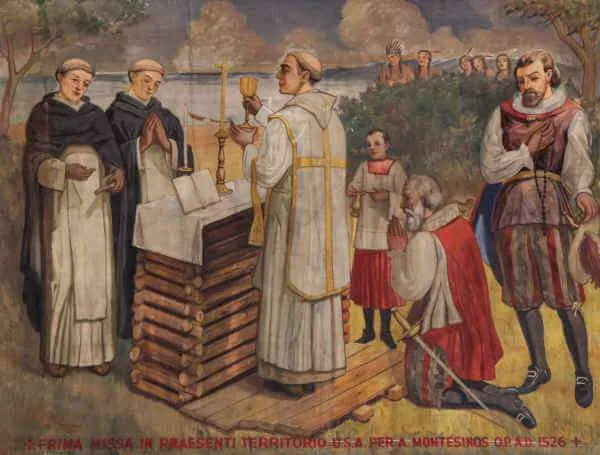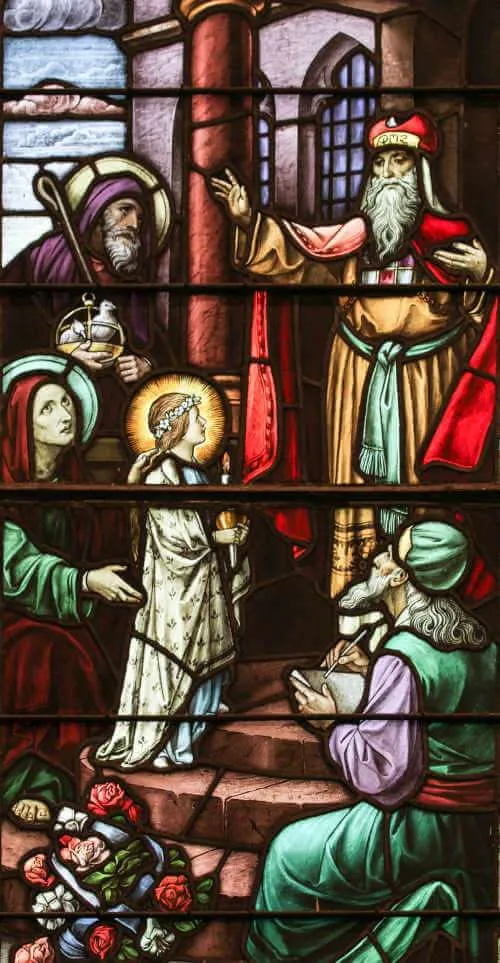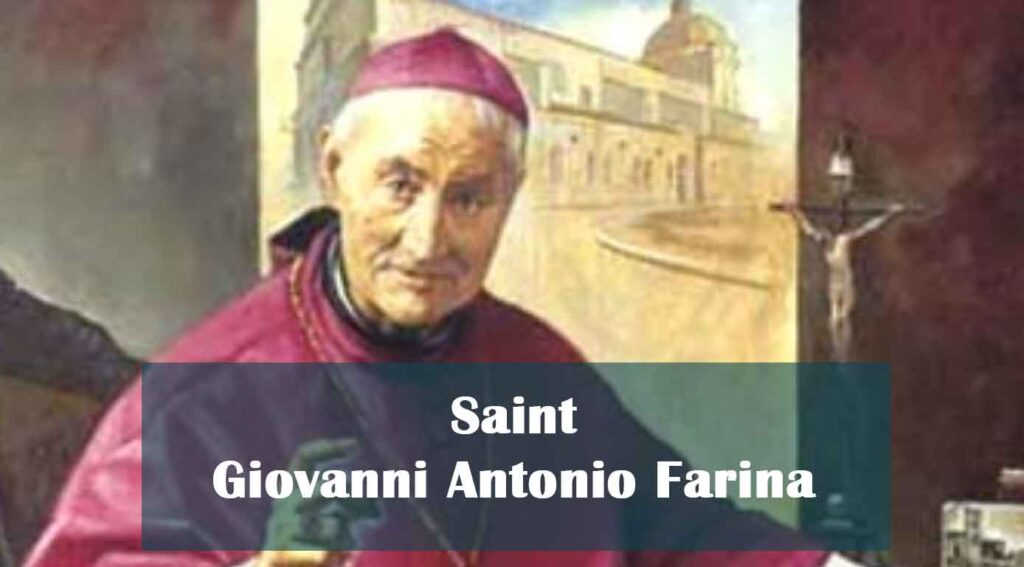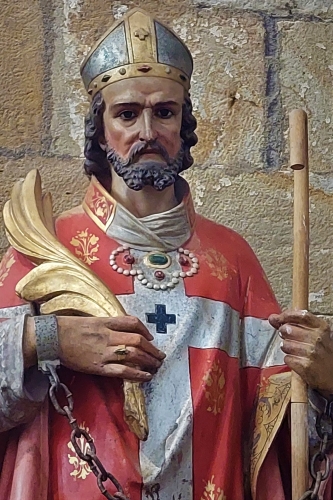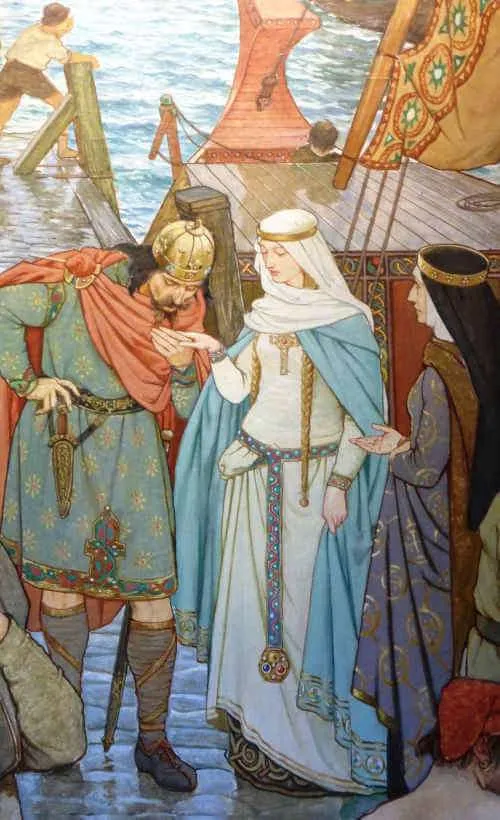Fourth Thursday in November
Thanksgiving is not only an American holiday, it is also celebrated as an optional liturgical memorial within the Catholic Church in the United States. Similar Church celebrations take place in many countries at different times according to local history and customs. Thanksgiving Day in the United States takes its roots from a feast of thanksgiving for the harvest that the English Pilgrims and the Wampanoag tribe shared at Plymouth in 1621. The governor appointed a day for public praise and prayer after the first harvest; legend holds that about ninety members of the Wampanoag tribe arrived unannounced and joined the fifty or so English settlers in a meal that lasted days and included provisions from both sides, such as fowl, fish, shellfish, stews, and vegetables. This first Thanksgiving led to a peace for more than fifty years.
In 1789 (the first year of the government under the Constitution), at the request of President Washington, Congress established a national thanksgiving observance on Thursday, November 26, “as a day of public thanksgiving and prayer to be observed by acknowledging with grateful hearts the many and signal favors of Almighty God.” The Congressional exhortation encouraged the people to “beseech Him to pardon our national and other transgressions, to promote the knowledge and practice of true religion and virtue, and to grant unto all mankind such a degree of temporal prosperity as He alone knows to be best.”
In 1817, New York State officially initiated an annual Thanksgiving holiday, and, in 1863, President Abraham Lincoln—soon after he had dedicated the cemetery at Gettysburg—issued a Thanksgiving proclamation in which he urged all citizens:
…to set apart and observe the last Thursday of November next, as a day of Thanksgiving… And I recommend to them that while offering up the ascriptions justly due to Him …, they do also, with humble penitence for our national perverseness and disobedience, commend to His tender care all those who have become widows, orphans, mourners or sufferers in the lamentable civil strife in which we are unavoidably engaged, and fervently implore the interposition of the Almighty Hand to heal the wounds of the nation and to restore it as soon as may be consistent with Divine purposes to the full enjoyment of peace, harmony, tranquility and Union.
Prior to this national institution of Thanksgiving, there is an earlier Catholic history of an “established” thanksgiving that took place in what is today Saint Augustine, Florida, with its seeds planted by the earliest Catholic explorers.
Exploration of what is today the United States of America began in 1492 with the arrival of Christopher Columbus, a Catholic. Columbus, however, never stepped foot on the mainland of what is today the United States. Instead, he discovered the Caribbean islands. In subsequent voyages, he discovered more Caribbean islands, Trinidad, and South and Central America.
In 1508, Juan Ponce de León established a settlement in what is today Puerto Rico. In 1513, de León and a small crew became the first recorded Catholics to step foot on what is today mainland United States. They landed near the modern-day city of Saint Augustine and then sailed by the Florida Keys before returning to Puerto Rico. He named the land Florida after the Spanish term “pascua florida,” meaning, “flowery festival,” because of the luscious and blooming flowers. With permission from the Spanish crown to colonize Florida, de León returned in 1521, but that trip was brief, possibly only a few weeks, because the natives attacked his party and fatally shot de León with an arrow.
In 1526 and 1539, other Spanish Catholic explorers arrived by sea and attempted to settle in what is now the mainland United States, without lasting success. In 1540, Francisco Vázquez de Coronado led an expedition from Mexico to the American Southwest and the Great Plains, including parts of modern-day Arizona, New Mexico, Texas, Oklahoma, and Kansas. He was searching for a fabled city of gold, which he did not find. Spanish Franciscan Father Juan de Padilla traveled with him and became the first martyr in North America from the arrows of the Kansas tribe.
In 1565, Spanish explorer Don Pedro Menéndez de Avilés arrived in Florida and founded the first European settlement that remains today. On that ship was Father Francisco López de Mendoza Grajales, the chaplain of the Spanish expedition. According to Father Francisco’s memoirs, they arrived at the coast of Florida on August 28, 1565, the feast of Saint Augustine of Hippo. Don Pedro named the landing spot after Saint Augustine in thanksgiving.
On September 8, 1565, the settlers—led by Don Pedro—disembarked and erected a cross, formally claiming the territory for both Spain and the Catholic Church. Following this, Father Francisco celebrated the first documented Mass on what is now U.S. soil. This Mass was on the Memorial of the Nativity of the Blessed Virgin Mary and expressed gratitude to God for the safe journey of the 800 sailors, soldiers, and settlers. The congregation also prayed for divine guidance for their future endeavors.
Although previous explorers likely celebrated Mass privately among themselves, this particular Mass stood out because it attracted the local indigenous people. A celebratory meal followed the Mass, featuring salted pork, Spanish red wine, garbanzo beans, bread, Caribbean yucca, and other available foods. The native Timucua tribe joined the explorers for this inaugural Thanksgiving feast, making it the first known shared meal between Europeans and native people, more than fifty years before the Plymouth feast. Shortly afterward, Father Francisco founded the first Catholic mission in the mainland United States—Mission Nombre de Dios.
This story presents Catholics with the ideal way to celebrate Thanksgiving Day. The word “Eucharist” means “thanksgiving.” The Mass is, first and foremost, an act of thanksgiving on our part because the gift contained within the Mass, the one and eternal Sacrifice of Christ for the salvation of souls, must evoke within us nothing but gratitude for this unmerited gift. Our gratitude to God for the gift of His Body, Blood, Soul, and Divinity must then lead us to unity and fraternal charity and celebration. These first Catholics not only celebrated together, they also invited the natives whom they encountered. In truth, it might have been the grace of that first Mass that God used to draw the natives to a peaceful encounter with the settlers. The Mass must unite us and must be the source of all we do and all we are, both individually and collectively.
As we celebrate Thanksgiving Day, try to attend Mass as the first act of your day. If you are unable to do so, take time for prayerful reflection as an opportunity to give thanks to God for His countless blessings, and then invite Him to walk with you in life to all that lies ahead, so that your life becomes an invitation to others to feast at the table of our Lord.
Source: https://mycatholic.life/saints/saints-of-the-liturgical-year/thanksgiving—usa-optional-memorial/

